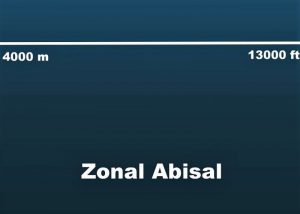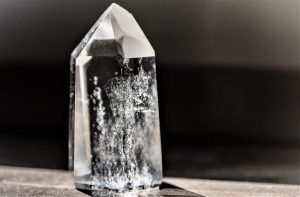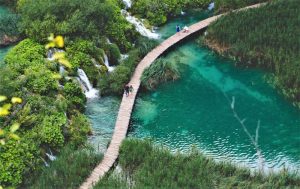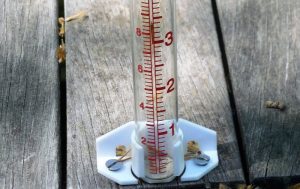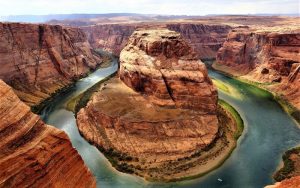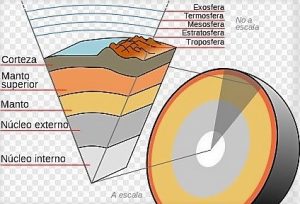Abyssal zone
The abyssal zone is the part of the ocean that is located more than 2,000 meters deep in the sea. The zone is mainly defined by its different environmental conditions which are very uniform, a characteristic that is reflected in the different forms of life that inhabit it. The abyssal kingdom is the largest environment for life on Earth, covering approximately 300,000,000 square kilometers, about 60 percent of the global surface and 83 percent of the area of oceans and seas. Abyssal waters originate at the air-sea interface in polar regions, primarily Antarctica. In these waters, salts and nutrients such as nitrogen, phosphorus and silica can be found in concentrations, and they are very uniform, even much higher than in the overlying waters. This is because abyssal waters are the reservoir of the salts of decomposed biological materials settling down from the upper zones, and the lack of sunlight prevents their absorption by photosynthesis.
What is an abyssal zone?
Also known as abyssopelagic zone, it is one of the different levels in which the ocean is divided, is an area in which sunlight cannot penetrate, full of fauna very varied and different.
Characteristics of the abyssal zone
- The oxygen content in abyssal water is completely dependent on the amounts at their polar site of origin and the absence of the photosynthesis process, which prevents the introduction of new oxygen at depth.
- Abyssal waters retain several cubic centimeters per liter of dissolved oxygen because dispersed animal populations do not consume oxygen faster than it is introduced in the abyssal zone.
- Abyssal life is concentrated on the seabed, however, the water closest to the floor may be essentially depleted of oxygen. The abyssal zone is a very quiet place and is kept away from storms that affect oceans.
- It is usually far enough from the land for sediment to be composed predominantly of microscopic remains of plankton produced in the food chain in the overlying waters from which they settle.
- The abyssal sediment in waters below 4,000 m in equatorial regions is mainly formed from the calcareous shells of foraminiferous zooplankton and phytoplankton, known as coccolithophores.
- Below 4,000 m, calcium carbonate tends to dissolve, and the main constituents of the sediment are brown clays and siliceous remains of radiolarian zooplankton and phytoplankton as diatoms.
- The abyssal zone is located between 3,000 and 6,000 meters deep, below the area known as bathypelagic and hadopelagic
- The temperature of the abyssal zone is very cold and has a quite high hydrostatic pressure. It has a great shortage of nutrients and has no natural light.
- There can be underwater accidents such as mountains, mountain ranges, plateaus and islands of volcanic origin.
Animals of the abyssal zone
The fish that inhabit the abyssal zone are known as abyssal fish. These animals tend to be gray or black, not very structured and without lines. The mobile forms have long legs; and the animals tied to the bottom have stems, allowing them to rise above the water layer closest to the bottom, where oxygen is scarce. Crustaceans and abyssal fish may be blind. With increasing depth, carnivores and scavengers become less abundant than animals that feed on mud and suspended matter.
Abyssal animals are believed to reproduce very slowly. Certainly the animals that inhabit this area are very strange and have a monstrous appearance. Most of them are also bioluminescent, which helps them attract prey and avoid certain dangers. You can also find abyssal gigantism, which includes animals as large as sea spiders that measure more than 1.50 meters. Among the species that we can find are: the giant squid that manages to measure between 17 and 19 meters long, the dragon fish, balloon fish, crystal squid, octopus Dumbo, anoplogaster brachycera, soccpharynx, melanocetus johnsonii and fish axe.
Plants of the abyssal zone
The flora that inhabits the abyssal zone feeds mainly on debris that falls to the bottom of the sea from the surface. Since sunlight cannot reach the plants they are not capable of photosynthesis, so there is no green algae. In some of the places where hydrothermal sources are present, which depend on volcanic energy, there is chemo synthesis, which develops some bacterial species.
How to cite this article?
Briceño V., Gabriela. (2019). Abyssal zone. Recovered on 23 February, 2024, de Euston96: https://www.euston96.com/en/abyssal-zone/
